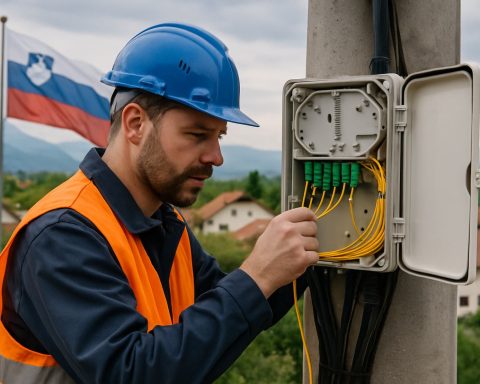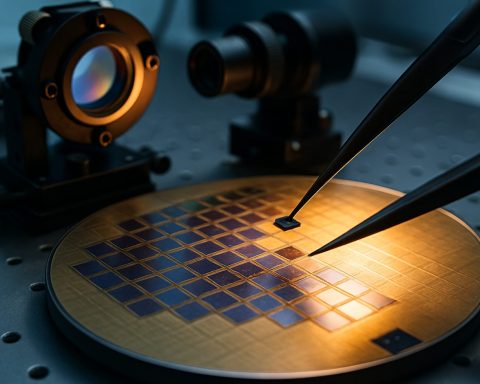- Awaiting launch at Vandenberg Space Force Base, NASA’s SPHEREx and PUNCH missions promise groundbreaking insights into the cosmos.
- Liftoff is scheduled for Saturday at 7:10 p.m. aboard a SpaceX Falcon 9 rocket, renowned for its reusable first stage returning to Landing Zone 4.
- The SPHEREx telescope will conduct a first-ever large-scale survey, creating a 3D map of 450 million galaxies to explore the galaxy’s life-sustaining ingredients.
- PUNCH will deploy four satellites to study the sun’s corona and solar wind, enhancing understanding of space weather and its effects on Earth.
- The mission will be livestreamed for global audiences, illustrating human ambition and the quest for knowledge beyond Earth.
- This launch highlights the synergy between technology and science, pushing the boundaries of human exploration and dreams.
Crowds gather in anticipation at the Vandenberg Space Force Base, eyes turned skyward, awaiting a spectacle that promises to unlock the universe’s enigmatic secrets. This coming Saturday evening, NASA’s audacious SPHEREx and PUNCH missions are poised to launch atop a SpaceX Falcon 9 rocket, embarking on a journey that merges ambition with cutting-edge science.
As the clock approaches the planned 7:10 p.m. liftoff, excitement tingles through the air. The Falcon 9, a marvel of modern engineering, stands ready, its towering form silhouetted against the Californian dusk. Within moments of liftoff, it will not only pierce the atmosphere but also break the sound barrier, gifting Santa Barbara, San Luis Obispo, and Ventura counties with a thunderous sonic boom as a testament to human endeavor.
Once the rocket ascends, it will separate its first stage, gracefully guiding it back to Landing Zone 4 with the precision of a ballet dancer. This signature SpaceX maneuver showcases the remarkable reusability that is redefining space exploration logistics.
Amongst the stars, the SPHEREx space telescope will gaze back at us, tasked with a mission as grand as the cosmos itself. Over the next two years, it will embark on the first-ever large-scale survey to dissect the fundamental ingredients of life nestled within the Milky Way. In its digital grasp, it will hold a 3D map of over 450 million galaxies—an astronomical feat that seeks to chart the course of cosmic history, from the universe’s infancy through epochs of reionization.
Meanwhile, the PUNCH mission will deploy four diminutive but mighty satellites, dispatched to hover closer to the Sun than any before. This quartet will vigilantly observe the sun’s corona, that ghostly halo, as it blurs into the sprawling solar wind. By deciphering these solar whispers, scientists hope to unlock understanding of space weather and its impacts on Earth’s technological fabric.
For those unable to witness this celestial departure in person, a livestream promises to bring the ethereal journey closer to homes across the globe, broadcasting hope and aspiration beyond the confines of Earth.
As the countdown inches towards its seminal moment, we collectively hold our breaths. Here is a dance of technology and science, pushing the boundaries of human knowledge, reminding us that even as we stand on this humble planet, our gaze—and our dreams—forever reach for the stars.
Unlock the Cosmos: The Falcon 9’s Visionary Launch from Vandenberg
New Facts & Insights
As we eagerly await the launch of NASA’s SPHEREx and PUNCH missions aboard the SpaceX Falcon 9 rocket, let’s delve deeper into the groundbreaking technologies and missions involved, as well as explore related topics and insights.
SPHEREx: Mapping the Universe
Mission Objectives:
– Cosmic Cartography: SPHEREx will create an extensive 3D map of the cosmos, surveying 99% of the sky in 96 different color bands.
– Origins of Life: By analyzing light from millions of galaxies, SPHEREx will investigate the origins of elements fundamental to life on Earth.
– Cosmic Inflation: It aims to study cosmic inflation, a pivotal theory about the universe’s expansion post-Big Bang.
Technology:
– Spectroscopy: This technique will allow SPHEREx to dissect complex cosmic spectra, offering insights into the chemical makeup of astronomical bodies.
PUNCH: Illuminating Space Weather
Mission Objectives:
– Solar Wind Studies: PUNCH will observe solar wind formation and structure, enhancing our understanding of how solar phenomena affect Earth.
– Space Weather Impact: By decoding solar wind and corona dynamics, it aims to predict space weather, crucial for satellite safety and communications.
Technology:
– Wide-field Imagers: These will capture dynamic solar corona emissions and help trace solar wind from the Sun to Earth.
How-To Steps & Life Hacks
How to Observe a Rocket Launch:
1. Choose the Right Location: Ideally, find a spot within the direct line of sight to the launch pad; coastal areas near Vandenberg offer pristine views.
2. Check Weather Conditions: Clear skies ensure visible trajectories and sonic booms.
3. Use Apps & Notifications: Download space tracking apps for real-time updates on launches and visibility forecasts.
Market Forecasts & Industry Trends
Reusability Revolution:
– SpaceX’s Model: Their reusable rocket technology cuts costs significantly, influencing the sector’s shift towards sustainable space exploration processes.
– Future Trends: More space agencies and private companies are following suit, expanding access to space missions.
Pros & Cons Overview
Pros:
– Cost-Effective: Reusable rockets lower costs and increase the frequency of launches.
– Scientific Advancement: The data from SPHEREx and PUNCH could revolutionize our understanding of the universe and climate.
Cons:
– Technical Challenges: Reusability involves significant engineering challenges that demand robust solutions.
– Space Debris Risks: More frequent launches increase space debris, necessitating better orbital management strategies.
Pressing Questions Answered
Why are missions like SPHEREx and PUNCH important?
– They help us understand our own origins and protect Earth’s technological infrastructure against solar-induced space weather.
Will the livestream provide any educational insights?
– Yes, NASA often supplements launches with commentary that educates viewers on mission details and scientific principles, accessible to a broad audience.
Actionable Recommendations
– Stay Informed: Follow NASA and SpaceX social media channels for real-time updates and educational content.
– Cultivate Interest in STEM: Encourage young learners to watch launches, sparking interest in space sciences.
– Embrace Technology: Use simulators or virtual reality experiences to deepen your understanding of rocket science.
Explore more about these exciting missions and technologies at NASA and SpaceX.







